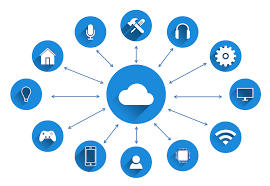In this article, we will discuss the differences between SaaS and Cloud. The evolution of technology, including networks, storage, and processing power, has resulted in the apogee of computing, which is now known as cloud computing or simply a cloud. So, the cloud is a standardized architecture that offers on-demand network access to pooled computer resources. The cloud model focuses on data management, storage, and processing through the internet. The cloud has three primary delivery models, with SaaS (Software as a Service) being one of them. It is a pay-per-use on-demand service that is installed on the software provider’s computers and made available to consumers over the internet.
Differences
- Cloud computing is a superset of SaaS, a cloud model that enables on-demand network access with minimal management effort, whereas SaaS is a subset of Cloud. It’s worth noting, however, that not all SaaS models are created in the cloud; they can also be created on a local terminal and deployed to a cloud-based server.
- When it comes to service providers, we have Google, Adobe, Slack, Shopify, Microsoft, and many more in the SaaS category, while AWS, MS Azure, Google cloud platform, IBM cloud, Adobe creative cloud, VMware, and Rackspace are some of the major cloud companies.
- A cloud user has the ability to customize and manage applications on a server that is hosted remotely by any third party; this means you have access to your data on the server. In contrast, a SaaS user has no rights to maintain the server or data; only subscriptions are taken for using a fully developed software via a web browser; this means no rights to management or customization of the application.
- One important distinction between the two is the data backup facility; a SaaS customer does not have the ability to save data, but a Cloud user may do so automatically.
- The user has no control over the servers in SaaS; it may be canceled at any moment without the user’s consent, however in the cloud, the user has complete control over the servers since they own them and no one can interfere with them without their permission.
- A cloud is an ocean in and of itself; all of the main cloud providers provide a vast array of solutions, such as AI, AR, VR, Blockchain, and application integration, but SaaS does not offer such a broad range of applications and categories. A cloud may provide a comprehensive corporate solution to its users, but the same cannot be stated for SaaS.



